In the realm of blue pigments, both natural and synthetic options offer distinct advantages and appeal to artists, manufacturers, and consumers alike. While natural pigments evoke a sense of tradition and craftsmanship, synthetic alternatives provide reliability and versatility. Ultimately, the choice between natural and synthetic blue pigments depends on individual preferences, artistic requirements, and ethical considerations, highlighting the diverse and dynamic nature of the pigment industry.
This blog post compares and contrasts the qualities and allure of natural blues with synthetic blues, providing a quick overview of the world of blue pigments. It explores the rationale behind my decision to use natural pigments in my artistic pursuits.
A Brief History of Blue Pigments
Blue has held profound significance throughout history, symbolizing divinity, purity, and royalty across civilizations. Ancient Egyptians used vibrant blue pigments derived from minerals like azurite and lapis lazuli to adorn tombs and sacred objects, while ancient Mesopotamians showcased their mastery of ceramics with blue-glazed tiles. In Greece and Rome, blue adorned statues, pottery, and glass vessels, symbolizing power and beauty. During the Middle Ages, ultramarine became the most coveted pigment, adorning religious art and manuscripts. The Renaissance saw artists like Leonardo da Vinci experimenting with new blue hues, while the industrial revolution brought synthetic blues like Prussian blue and phthalo blue, expanding artistic possibilities. Today, blue continues to inspire artists and designers worldwide, embodying the timeless allure of the heavens and the depths of the sea in contemporary art and culture.
Natural Blue Pigments
Throughout history, humans have extracted blue pigments from natural sources, often minerals and organic materials. Among these, ultramarine stands as a timeless gem, drawn from lapis lazuli’s depths, cherished by artists for its radiant hue and scarcity through the ages. Additional blue pigments, such as azurite, malachite, and Egyptian blue have also adorned humanity’s artistic endeavors throughout the ages.
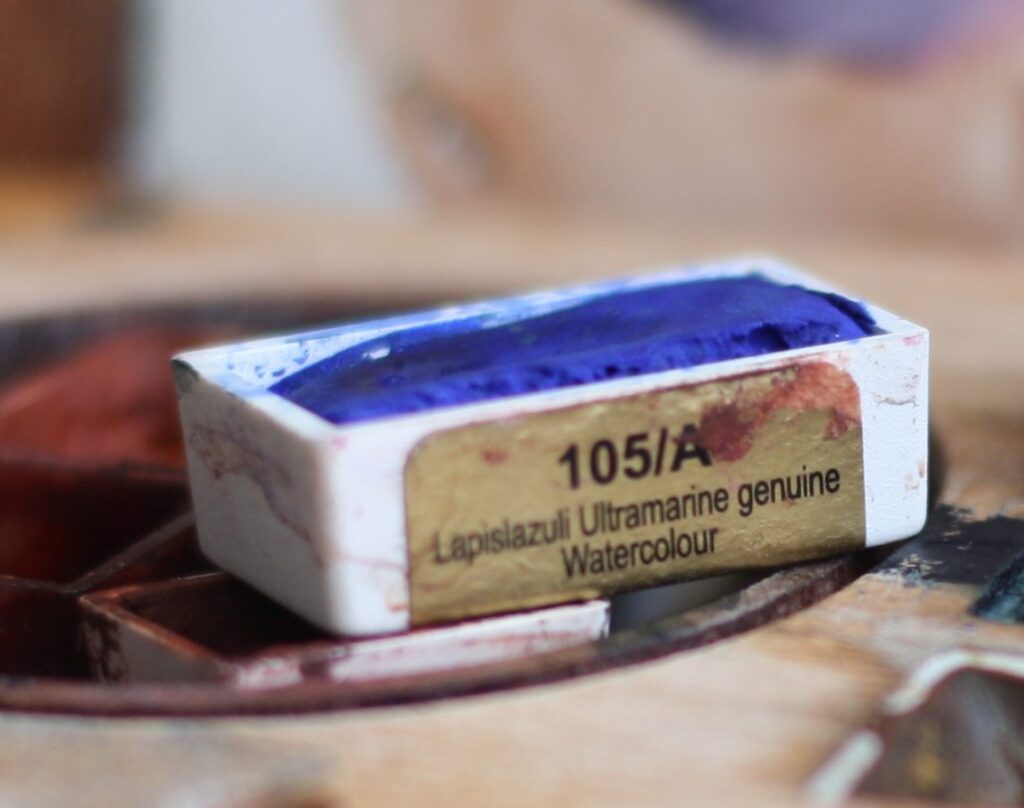
Watercolor paint pan crafted from Afghanistan’s Lapis Lazuli
As an organic dye gardener, I find immense joy in cultivating Japanese indigo, among other plants, to extract natural blue pigments. Indigo, derived from various species of indigofera leaves, weaves a tapestry of cultural heritage, saturating textiles and traditions worldwide with its deep blue dye. Similarly, Isatis tinctoria, or Woad, once held sway in Europe, bestowing its vibrant blue pigment before the widespread adoption of indigo, leaving an indelible mark on history’s canvas.
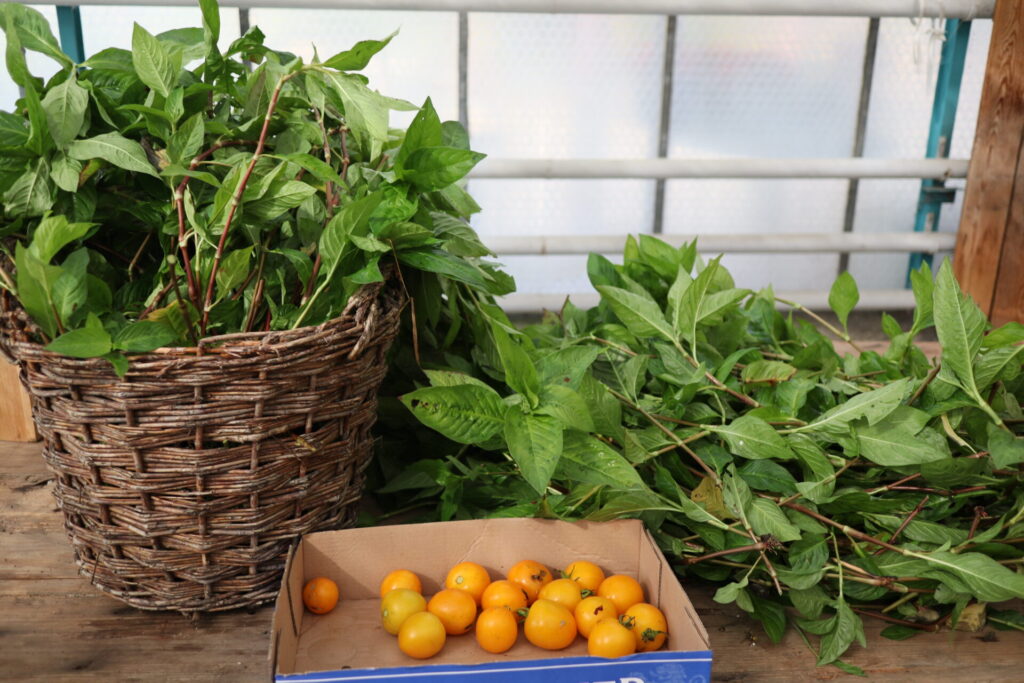
Harvest of Indigo Leaves, 2023
Amongst all the blues, indigo holds a special place in my heart. Its ease of cultivation and potential for pigment extraction, particularly from the Persicaria species, makes it a cherished favorite. However, while woad is also easy to cultivate, its extraction process can pose challenges.
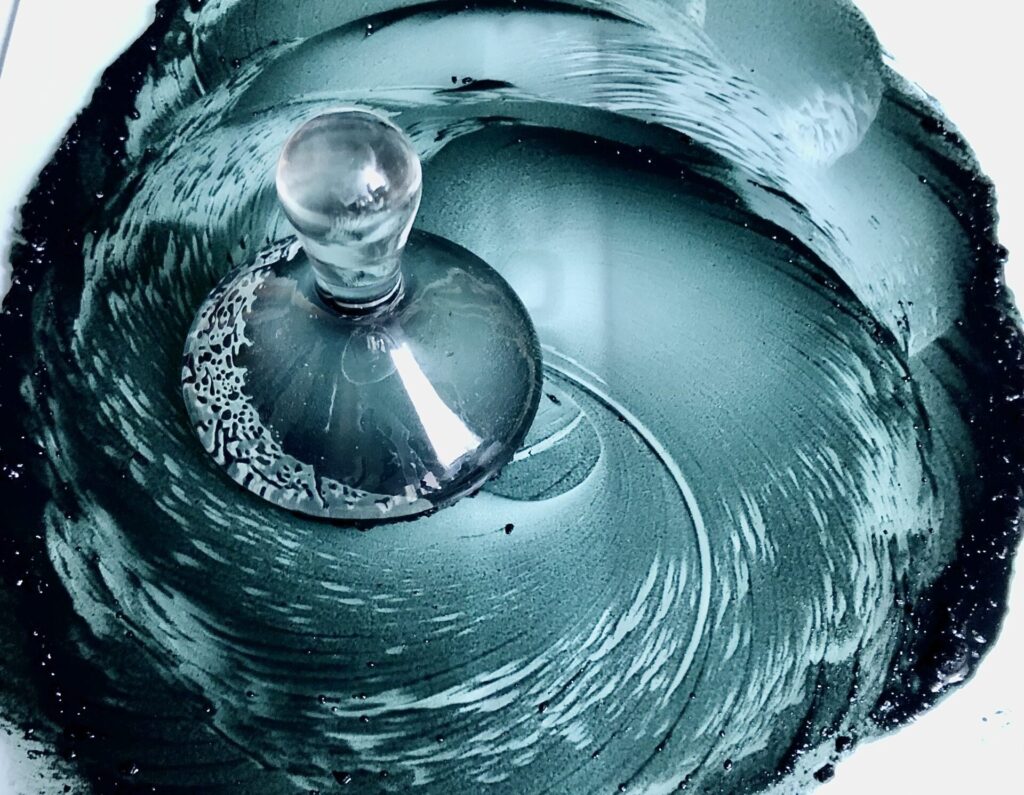
Indigo pigment, 2023
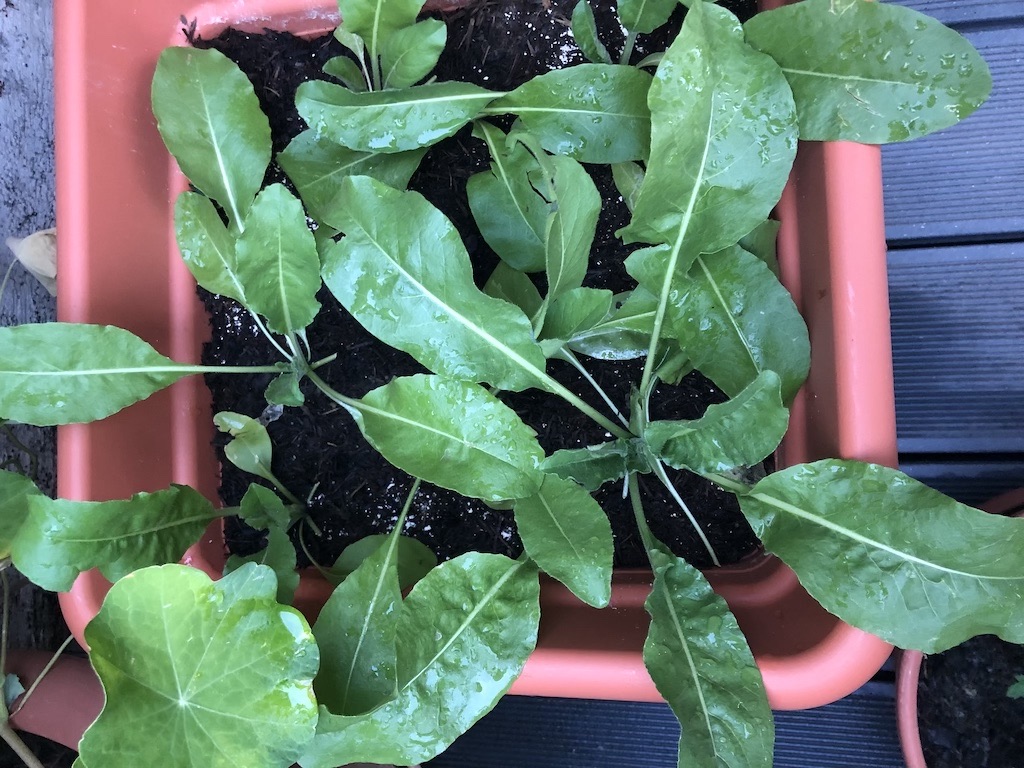
Cultivation of Woad in Pots, 2023
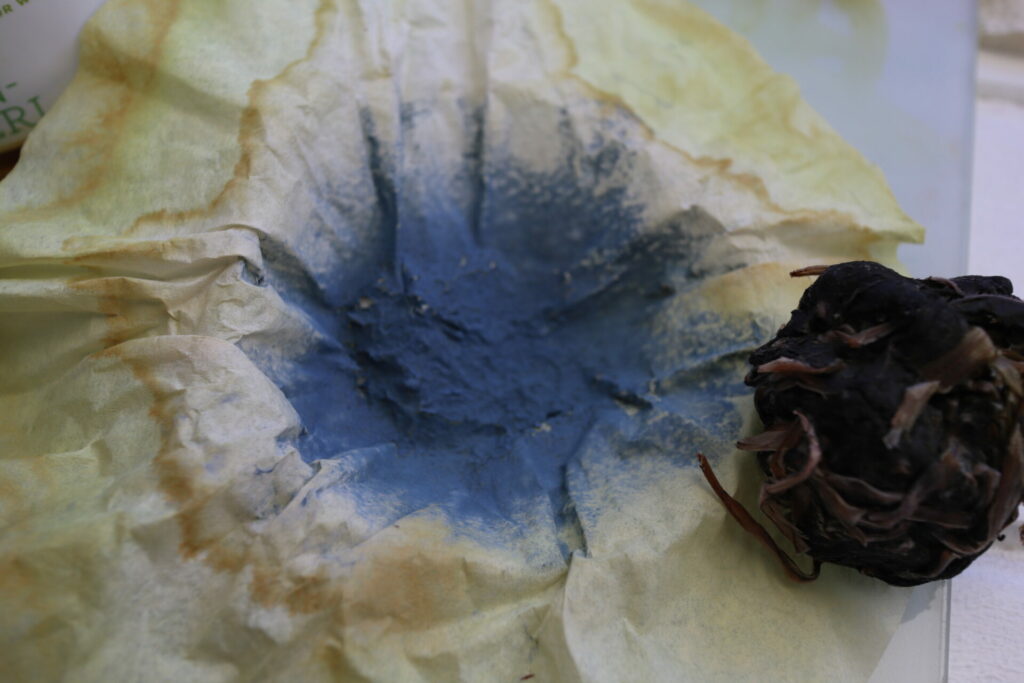
Woad pigment, 2022
Characteristics of Natural Blue Pigments
Natural blue pigments offer unique characteristics that distinguish them from synthetics. They often boast a depth and complexity of color that is challenging to replicate artificially, thanks to the irregularities inherent in natural sources.
Additionally, natural pigments are renowned for their stability and permanence, enduring for centuries without significant fading or degradation. Exceptions exist, such as the Blue Lake pigment extracted from plants like cabbage, radicchio, and butterfly pea. Despite their propensity to fade over time when exposed to light, these plant-derived pigments can still produce vibrant blue shades.
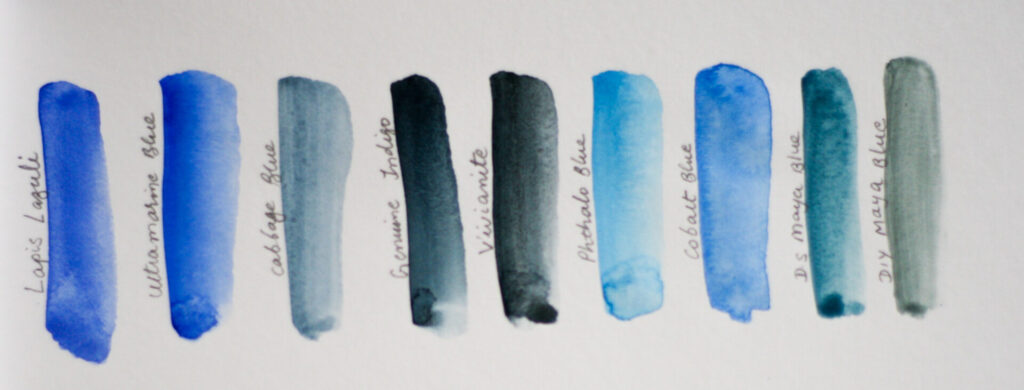
A panel showcasing various mineral, plant based and synthetic blue pigments
The Hazards of Natural Blue Pigments
It’s a common belief that natural substances are always safe, but it’s crucial to recognize that this isn’t universally true. While natural blue pigments are celebrated for their beauty, it’s essential to acknowledge that they may carry certain risks due to their composition. Some pigments, like those obtained from lapis lazuli and copper, can contain elements or compounds that may be harmful.Similarly, copper-based pigments such as azurite and malachite may pose health risks with prolonged exposure to dust or fumes.
This passage aims to promote awareness and responsible decision-making regarding the proper handling and disposal of pigments and paints, especially in large quantities. While it doesn’t delve into the specifics of chemical hazards associated with dry pigments, it underscores the importance of educating oneself about potential risks and taking necessary precautions to protect both personal well-being and the environment.
Synthetic Blue Pigments
The Industrial Revolution marked a significant turning point in the production of blue pigments with the development of synthetic alternatives. Prussian blue, synthesized in the early 18th century, revolutionized the world of art with its intense, stable hue. Later advancements led to the creation of synthetic ultramarine , cerulean blue and phthalocyanine blue, offering artists a broader palette of vibrant blues with consistent quality and affordability.
Prussian blue and phthalo blues, beloved by artists for their vibrant tones, can harm aquatic life if mishandled. Prussian blue’s cyanide compounds and phthalo blues’ pigment dust can pose risks to aquatic organisms. Proper containment and disposal are crucial to minimize environmental impact.
Additionally, lead-based blues such as cerulean blue contain toxic lead, while cobalt-based pigments like cobalt blue can cause respiratory issues if inhaled. Therefore, when working with natural blue pigments, it’s essential to implement safety measures such as wearing protective gear and ensuring adequate ventilation to minimize health risks.
Characteristics of Synthetic Blue Pigments
Synthetic blue pigments offer numerous advantages compared to natural ones. Firstly, they typically display superior color purity and consistency, enabling precise color matching and reproducibility in industrial contexts. Additionally, synthetic pigments can be customized to possess specific properties like lightfastness, heat stability, and chemical resistance, addressing varied requirements across different disciplines.
Why I don’t use Synthetic pigments
I opted for self-made natural pigments after learning about the environmental impact of the industrial pigment production factories. This decision was reinforced by concerns about labor conditions.
The Blues in My Palette
The blues that are ever-present in my palette are ultramarine blue, indigo, and vivianite. While I acquired lapis lazuli from the Zecchi art store in Florence, I seldom utilize it. Lately, I’ve expanded my collection with two new blues: Maya blue, a blend of Japanese indigo and fuller’s earth, and Blue Lake pigment sourced from red cabbage leaves. Although Maya blue doesn’t precisely mimic the original hue, I fondly call it so due to my fascination with its creation process. I’ve recently shared the method of making Maya blue on my YouTube channel.
In my creative journey, I’ve embraced the use of natural blue pigments as not just a choice, but a commitment to honor our planet and its heritage. While it presents challenges, particularly in capturing the ethereal beauty of clouds or the fluidity of water, I find myself drawn to the subtle, nuanced hues offered by natural blues. There’s a profound sense of connection and authenticity in working with these pigments, cultivating my own dye plants, and extracting pigments from the earth. Through this dedication, I hope to inspire others to explore the beauty of natural materials and join me in weaving a story of harmony between art and nature.
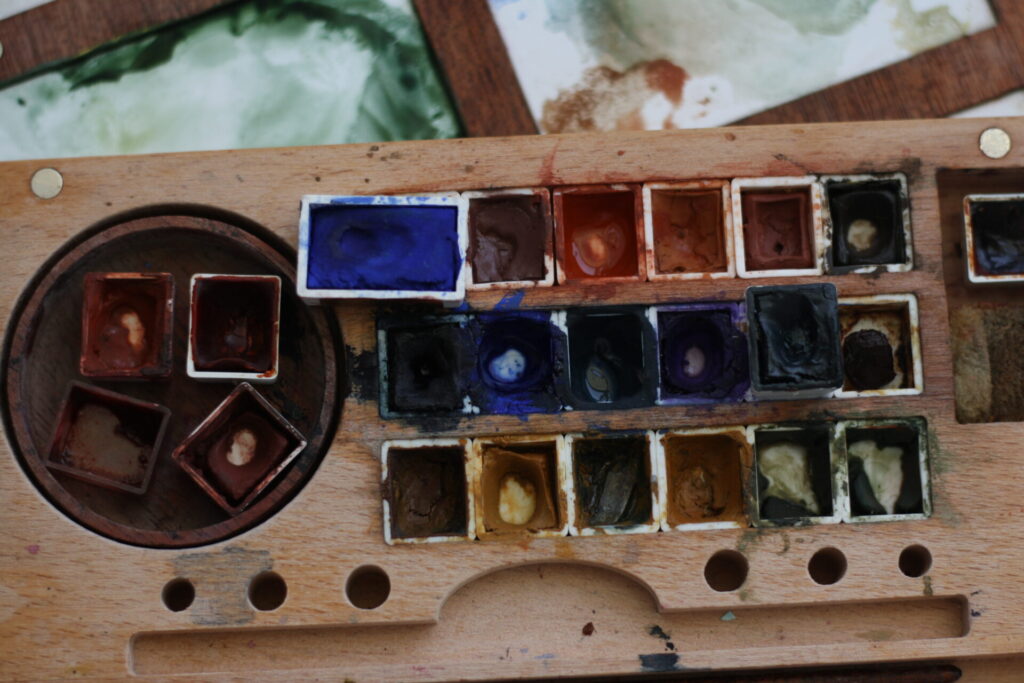
My palette of handmade pigments and watercolor paints.
Conclusion
In conclusion, the realm of blue pigments offers a rich tapestry of tradition, innovation, and artistic expression. From ancient mineral sources to modern synthetic creations, each pigment carries its own story and allure. As an organic dye gardener, pigment maker and artist, I’ve found joy and purpose in cultivating and using natural pigments, honoring both the beauty of nature and the legacy of human creativity.
References:
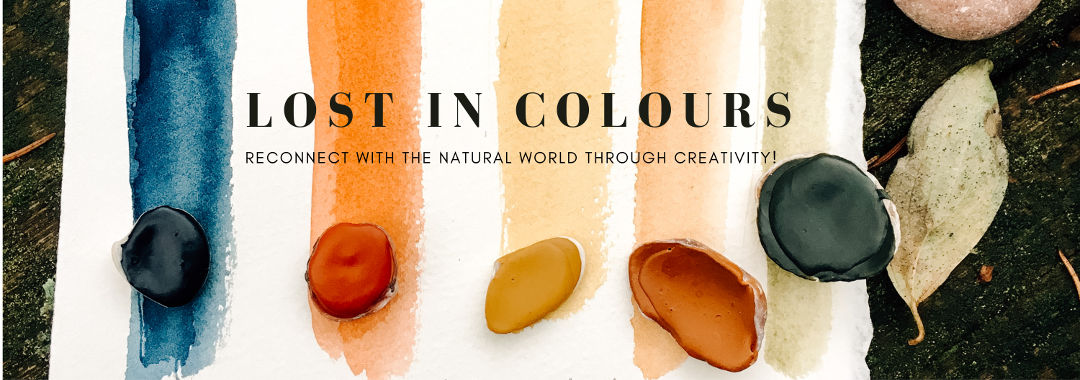
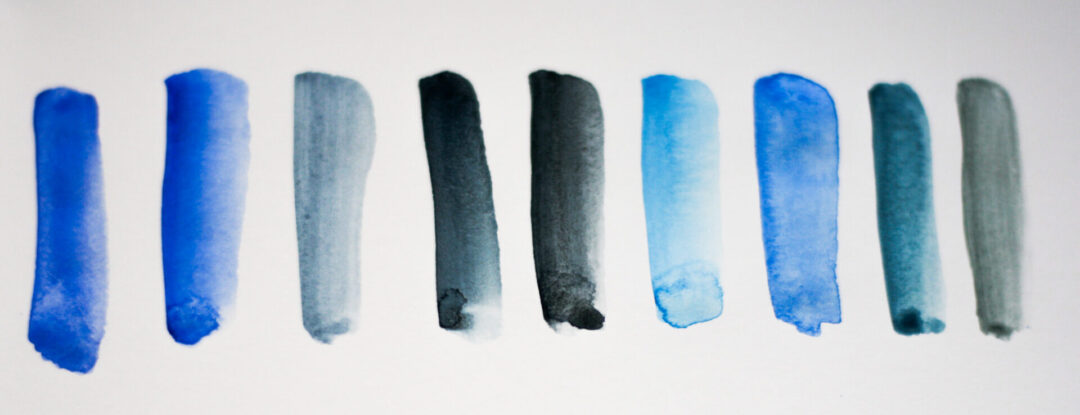


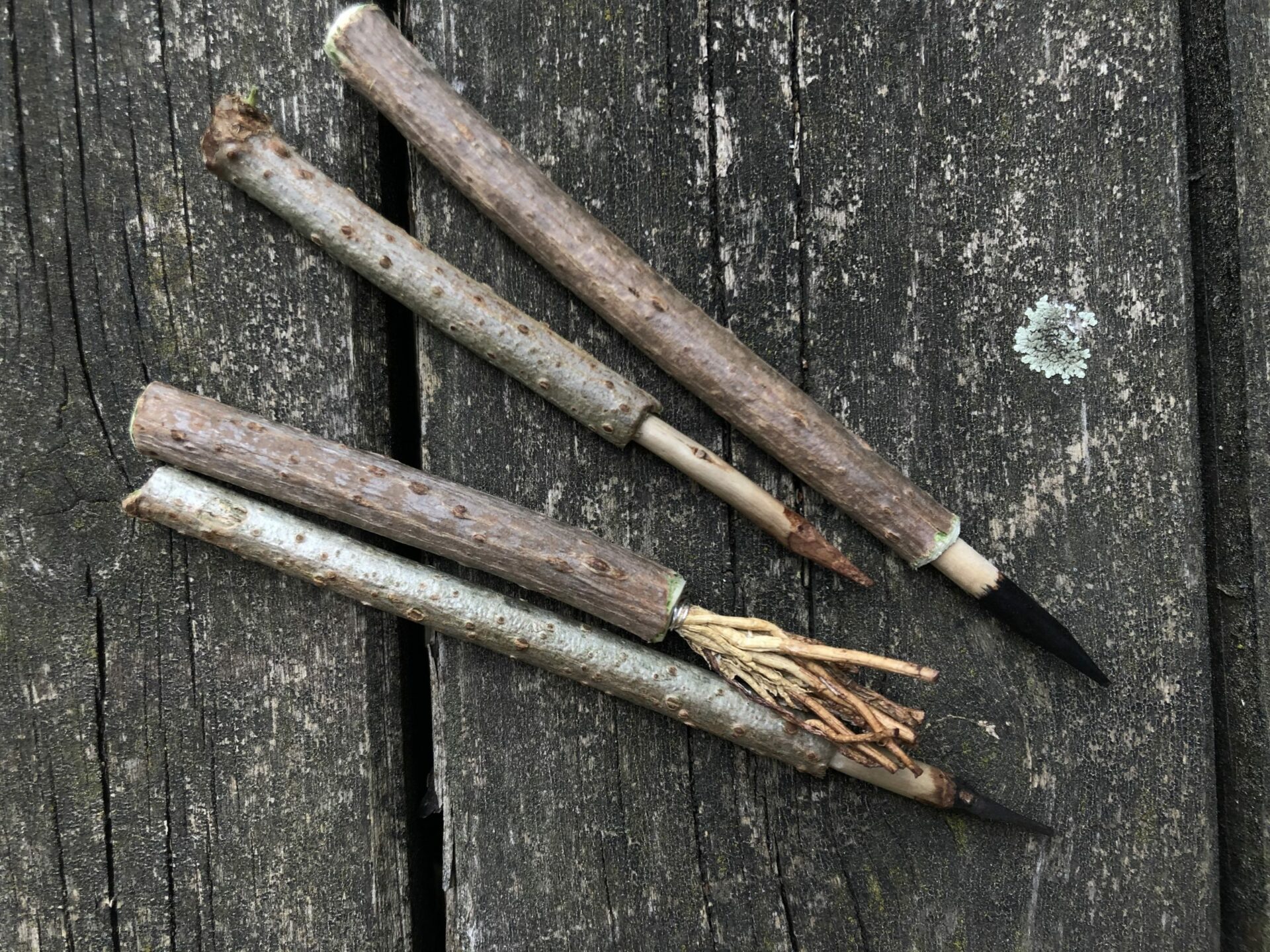
No Comments